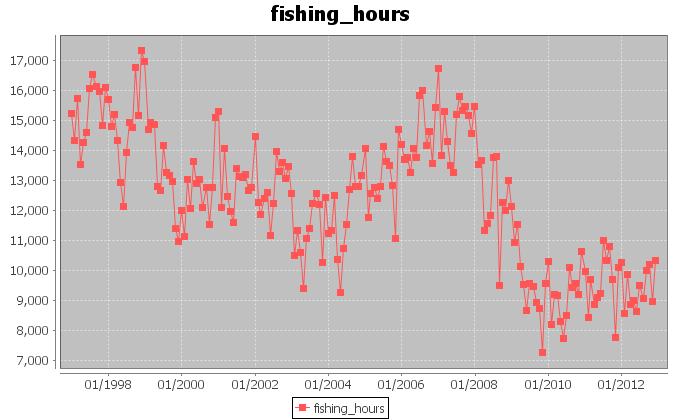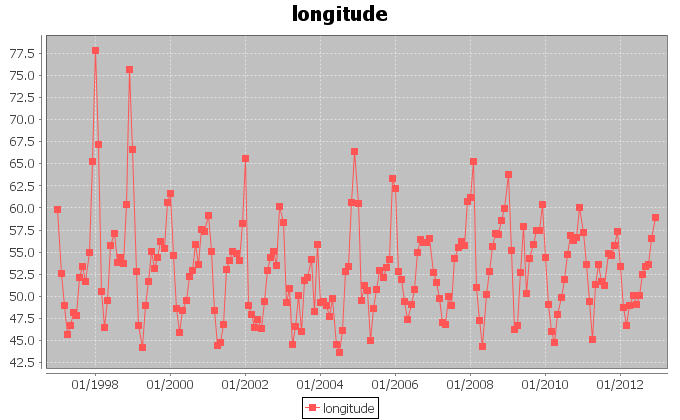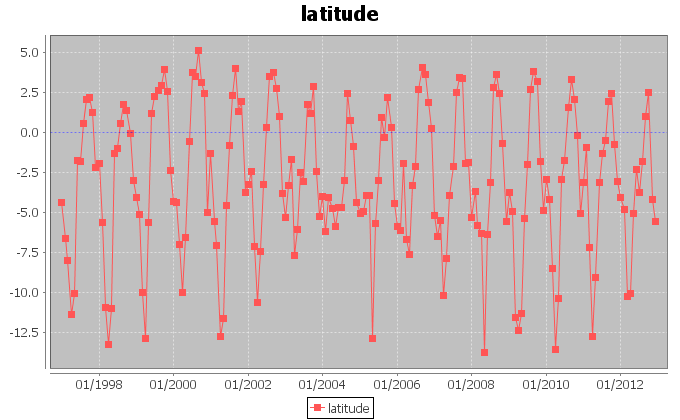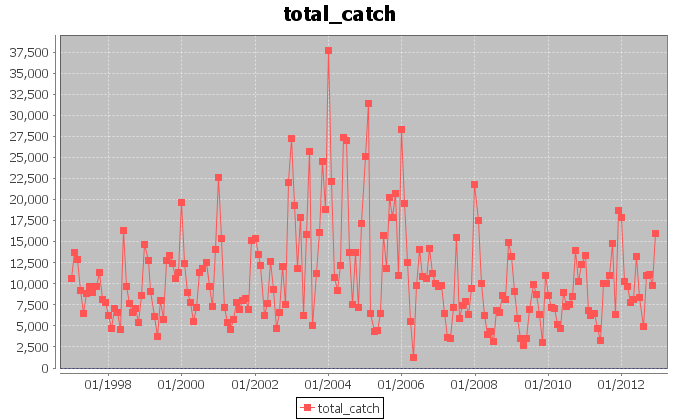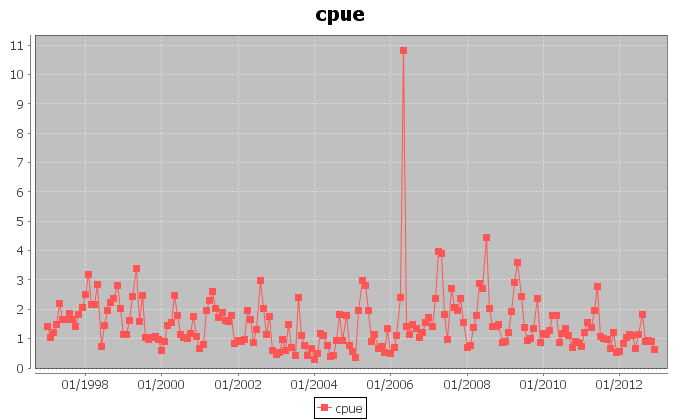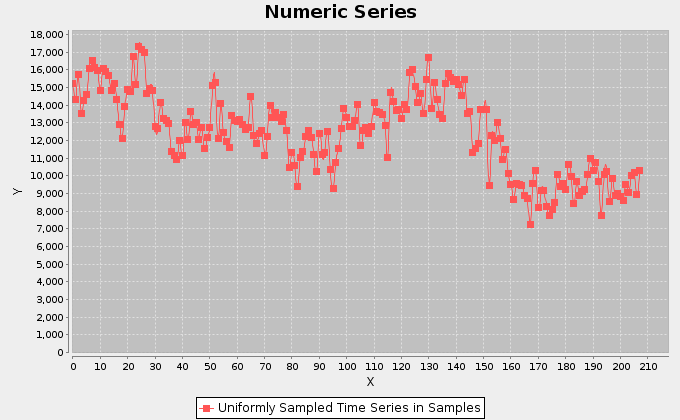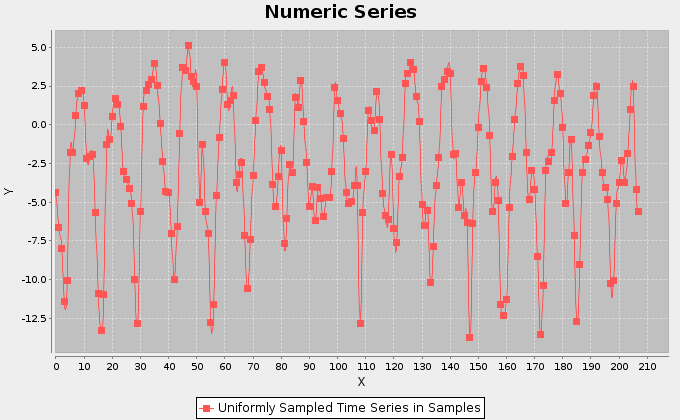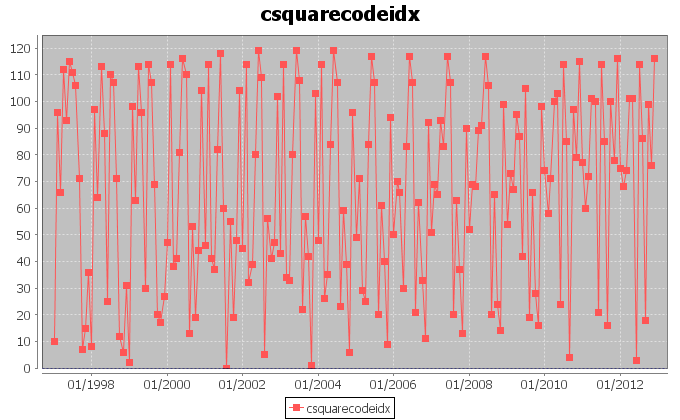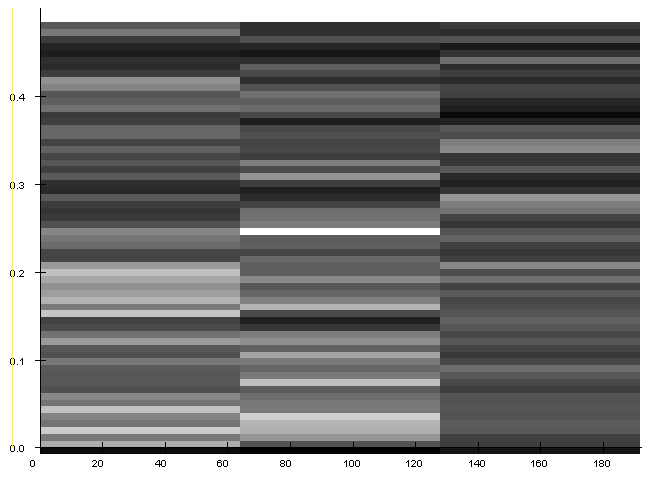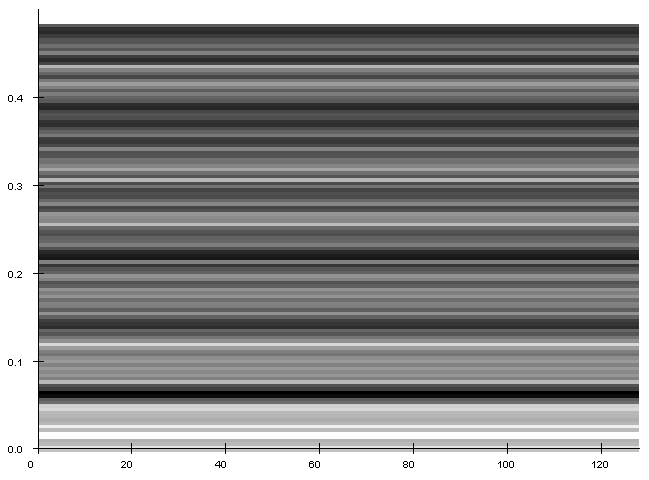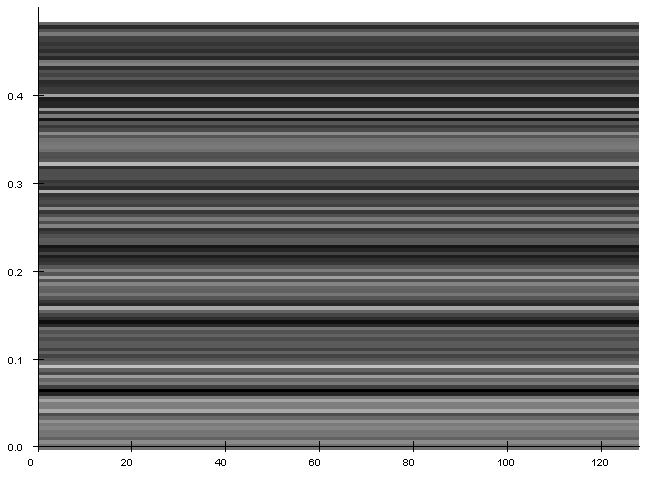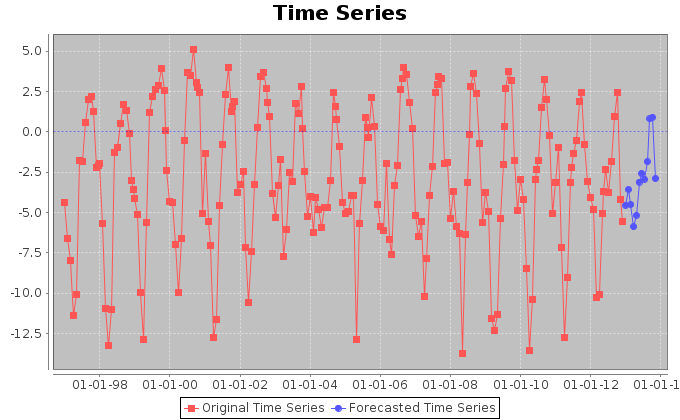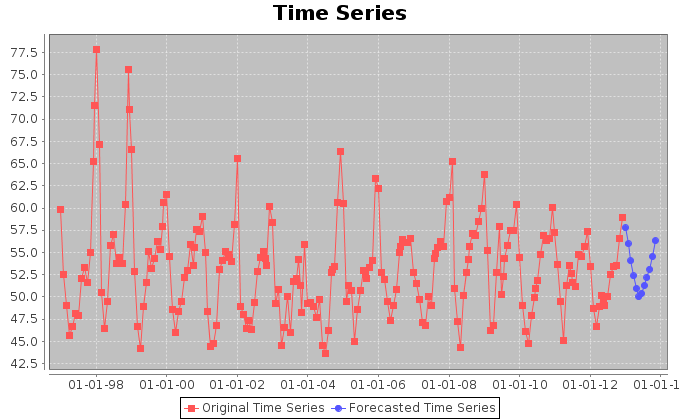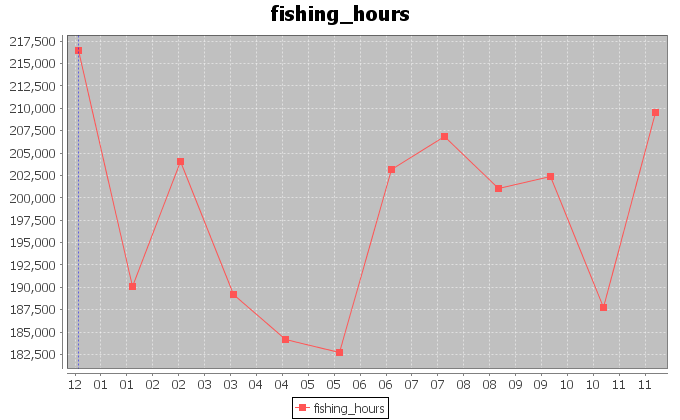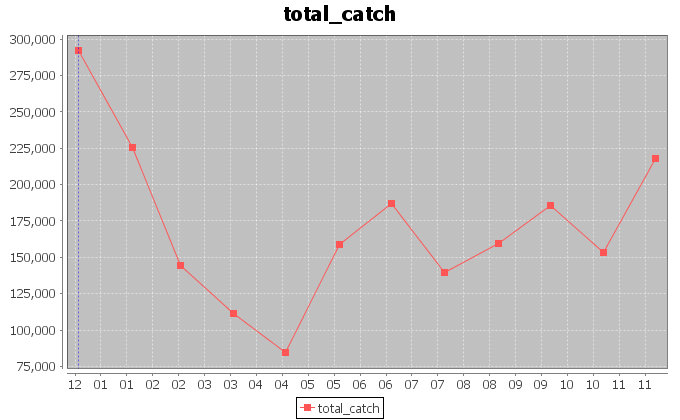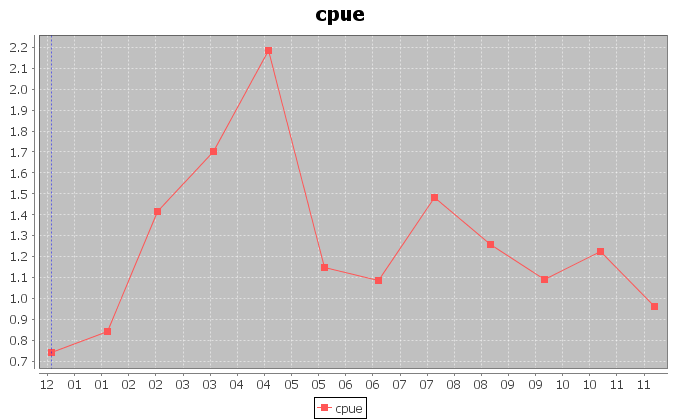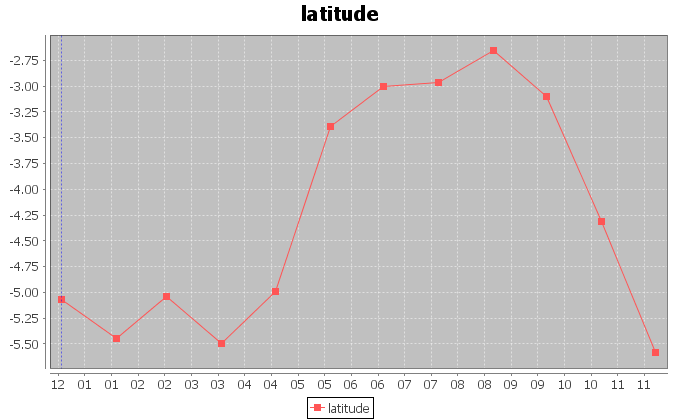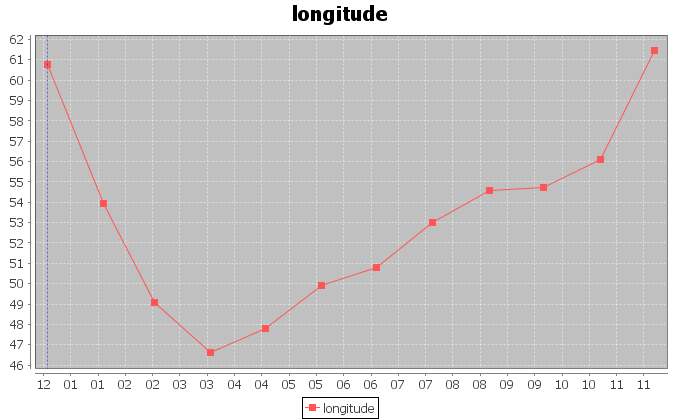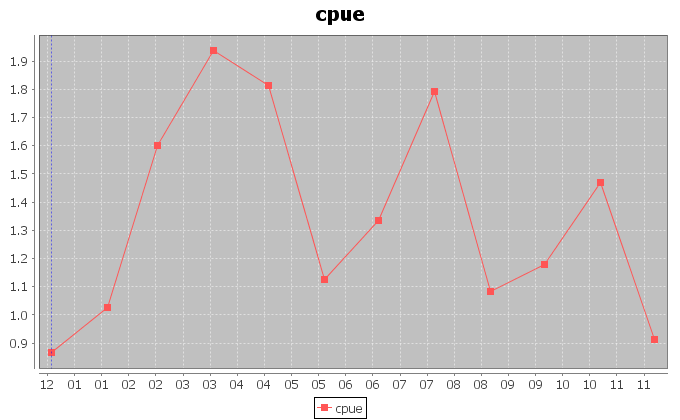Difference between revisions of "IOTC Area Predictive analysis"
(→Approach) |
(→Approach) |
||
| Line 4: | Line 4: | ||
==Approach== | ==Approach== | ||
| − | + | Our first attempt aimed to discover hidden periodicities in the exploitation of the ocean area. Thus, we traced the trend of the fishing hours effort in the period between January 1997 and December 2012. We summed the hours spent in the same month and eventually obtained the trend in figure 1. | |
| − | + | ||
[[Image:barycentereffort.png|frame|Fishing hours aggregated per month along the entire period January 1997-December 2012]] | [[Image:barycentereffort.png|frame|Fishing hours aggregated per month along the entire period January 1997-December 2012]] | ||
| − | + | Furthermore, we associated the fishing hours in one single month to the barycenter of the areas interested by the fishing activity in that month. The monthly barycenters were calculated by weighting each 1 degree cell in the original dataset according to the fishing hours spent in that month in the cell. The resulting dataset can be found here. This contains unfolded information about the barycenters coordinates and their distance from the origin of the reference system. | |
| − | + | Figure 2 and 3 display the trends for the longitudes and latitudes of the barycenter. The signals show a periodic behaviour, which we investigated more accurately. In figures 4 and 5 we show the | |
| + | {|style="margin: 0 auto;" | ||
| + | | [[Image:barycenterlongitude.png|thumb|center|upright=2.5|Distribution of the vessels longitudes for Yellofin Tuna by Purse Seine technique, in the entire period January 1997-December 2012]] | ||
| + | | [[Image:barycenterlatitude.png|thumb|center|upright=2.5|Distribution of the vessels latitudes for Yellofin Tuna by Purse Seine technique, in the entire period January 1997-December 2012]] | ||
| + | |} | ||
| − | |||
| − | [[Image:barycentercatch.png| | + | {|style="margin: 0 auto;" |
| + | | [[Image:barycentercatch.png|thumb|center|upright=2.5|Catch quantity in tonnes for Yellofin Tuna, in the entire period January 1997-December 2012]] | ||
| + | | [[Image:barycentercpue.png|thumb|center|upright=2.5|CPUE for Yellofin Tuna, in the entire period January 1997-December 2012]] | ||
| + | |} | ||
| + | |||
| + | |||
| + | [[Image:barycentereffortsamples.png|thumb|center|upright=2.5|Fishing hours trend in samples.]] | ||
| − | |||
| − | |||
[[Image:Barycenterlatitudesamples.png|frame|center|Latitude trend in samples.]] | [[Image:Barycenterlatitudesamples.png|frame|center|Latitude trend in samples.]] | ||
| − | |||
[[Image:barycentercsquares.png|frame|center|Distribution of the presence of vessels on 1 degree csquares, in the entire period January 1997-December 2012]] | [[Image:barycentercsquares.png|frame|center|Distribution of the presence of vessels on 1 degree csquares, in the entire period January 1997-December 2012]] | ||
Revision as of 15:01, 21 May 2014
Description
Hypothesis and Thesis
Approach
Our first attempt aimed to discover hidden periodicities in the exploitation of the ocean area. Thus, we traced the trend of the fishing hours effort in the period between January 1997 and December 2012. We summed the hours spent in the same month and eventually obtained the trend in figure 1.
Furthermore, we associated the fishing hours in one single month to the barycenter of the areas interested by the fishing activity in that month. The monthly barycenters were calculated by weighting each 1 degree cell in the original dataset according to the fishing hours spent in that month in the cell. The resulting dataset can be found here. This contains unfolded information about the barycenters coordinates and their distance from the origin of the reference system. Figure 2 and 3 display the trends for the longitudes and latitudes of the barycenter. The signals show a periodic behaviour, which we investigated more accurately. In figures 4 and 5 we show the
Aggregation on 12 Months
Analysis on the Most Exploited Csquare
| Csquare code | Exploitation (fishing hours) |
|---|---|
| 3005 | 614135.3 |
| 1005 | 709254.3 |
| 3004 | 513798.8 |
| 3104 | 211621.1 |
| 3006 | 258669.6 |
| 3105 | 24718.3 |
| 1004 | 12235.1 |
| 3004 | 513798.8 |
| 3007 | 33038.7 |
